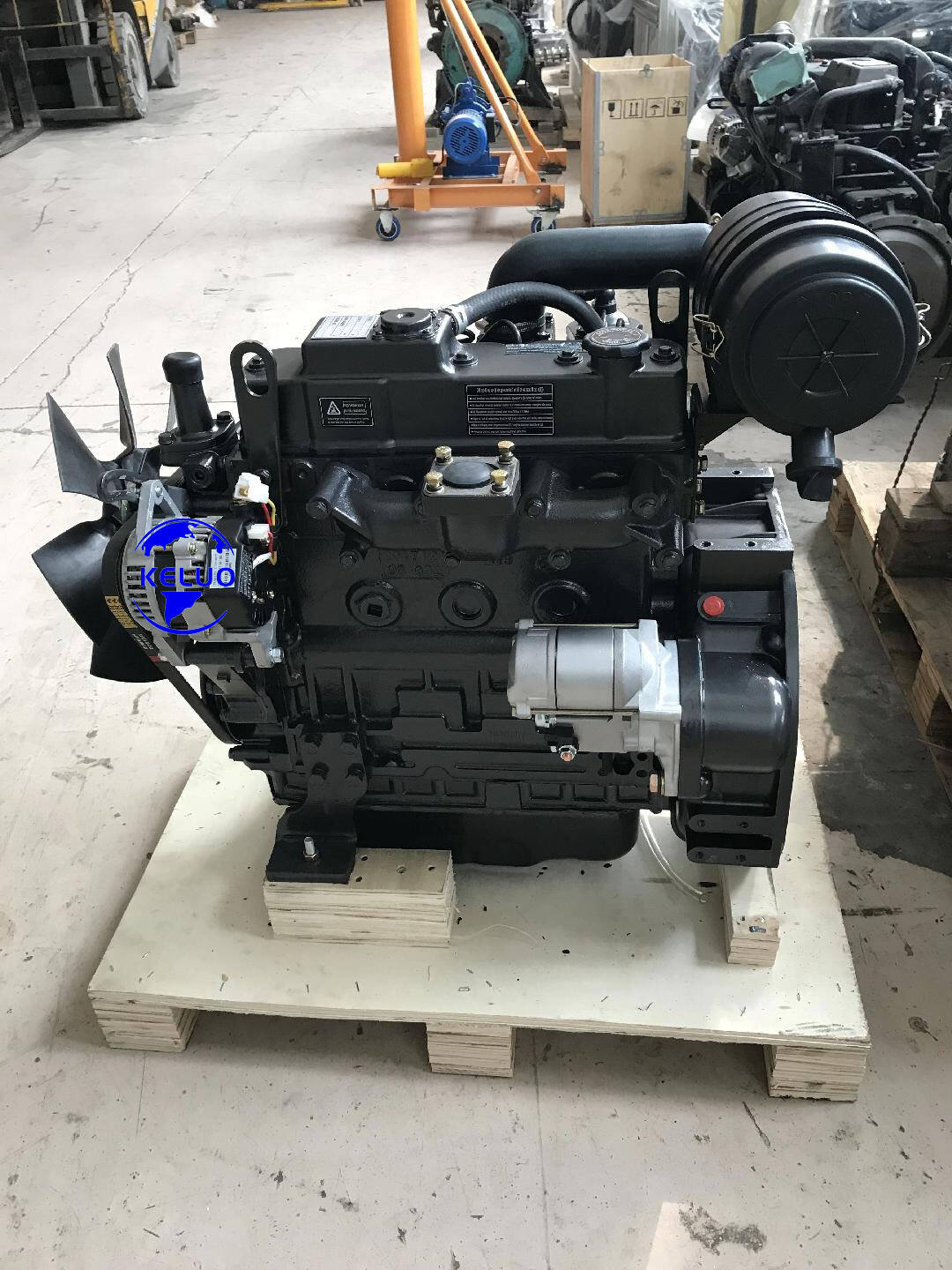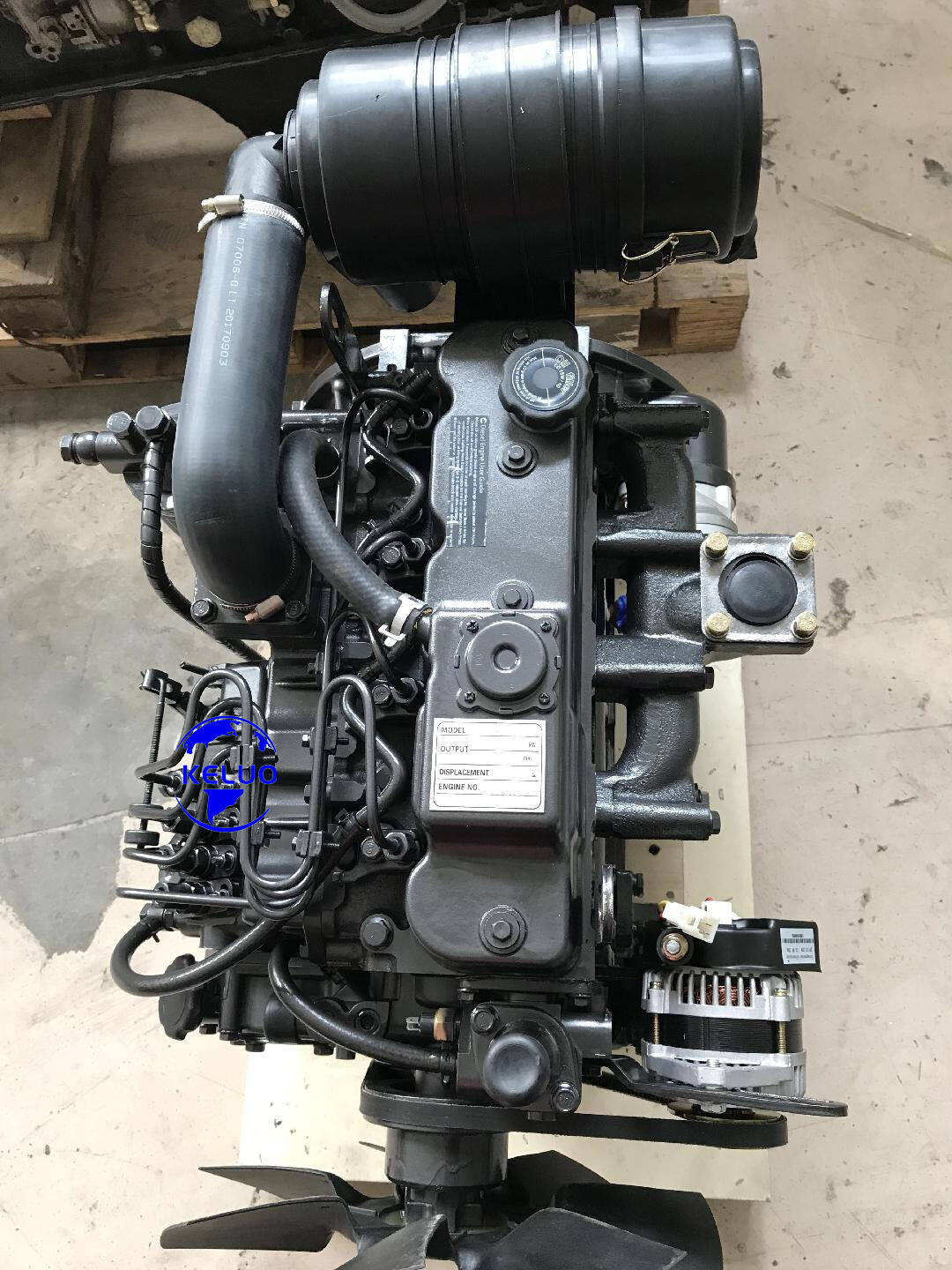Udhëzues Esencial për Problemet e Zakonshme të Motorrave Yanmar dhe Zgjidhjet nga Ekspertët
Motorët Yanmar kanë fituar një reputacion të ngurtë për besueshmërinë dhe performancën e tyre në anije detare, pajisje bujqësore dhe aplikime industriale. Megjithatë, si çdo sistem mekanik, këta motorë të fuqishëm mund të pësojnë shtresa të ndryshme që kërkojnë vëmendje dhe mirëmbajtje të duhur. Kuptimi i këtyre problemeve të zakonshme dhe zgjidhjet për to është thelbësor për maksimizimin e performancës dhe jetëgjatësisë së motorit.
Në këtë udhëzues të hollësishëm, do të shqyrtojmë problemet më të përhapura me motorët Yanmar dhe do të ofrojmë zgjidhje të detajuara për t'ju ndihmuar të ruani performancën optimale. Pavarësisht nëse jeni pronar i një anije, fermieri apo operator pajisjesh, kjo informacion do të jetë e pavlerë për të mbajtur motorin tuaj në funksionim të lëmë.
Probleme të Nisjes dhe të Sistemit të Karburantit
Vështirësi në Nisje të Ftohtë
Një nga problemet më të zakonshme me të cilat përballen pronarët e motorëve Yanmar është vështirësia për t'i nisur motori në kushte të ftohtë. Ky problem rrjedh shpesh nga cilësia e dobët e karburantit, filtra të bllokuar të karburantit ose ajër në sistem. Për ta zgjidhur këtë, sigurohuni që po përdorni karburant të pastër dhe të ri, i përshtatshëm për klimën tuaj. Zëvendësimi i rregullt i filtrave të karburantit dhe çajrimi i duhur i sistemit të karburantit mund të përmirësojnë në mënyrë të konsiderueshme performancën gjatë nisjes së ftohtë.
Gjithashtu, kontrolli dhe mirëmbajtja e plugave të nxehtësisë është e thelbësishme për funksionimin në kushte të ftohtë. Këto pjesë paranxehin kamerën e djegies, duke e bërë më të lehtë nisjen e motorrit në temperaturë të ulëta. Nëse plugat tuaj të nxehtësisë po dështojnë, do të vëreni rritje të kohës së nisjes dhe tym të bardhë gjatë nisjes.
Përmbytja e Sistemit të Karburantit
Karburanti i ndotur mund të shkaktojë dëme të mëdha në performancën e një motori Yanmar. Uji në sistem, rritja e baktereve dhe mbeturinat mund të çojnë në djegie të dobët, zvogëlim të fuqisë së daljes dhe dëmtime potenciale të komponentëve të injeksionit. Instalimi i një separatori të cilësisë së lartë karburant-uji dhe nxjerrja e rregullt e ujit nga sistemi i karburantit janë masa parandaluese të rëndësishme.
Motorët modernë Yanmar kanë sisteme të sofistikuara të injeksionit të karburantit që kërkojnë karburant të pastër dhe me cilësi të lartë për të funksionuar si duhet. Zbatimi i një skedi mirëmbajtjeje të rregullt që përfshin pastrimin e sistemit të karburantit dhe zëvendësimin e filtrave mund të parandalojë shumë nga problemet e zakonshme të lidhura me karburantin.

Sfida e Sistemit të Ftohjes
Probleme me Ngrohjen e Tepruar
Përndjeshja është një shqetësim i madh që mund të çojë në dëmtime serioze të motorit nëse nuk merret parasysh menjëherë. Shkakët e zakonshëm përfshijnë kalime të bllokuara për ftohje, pompa uji që dështojnë ose impeler të dëmtuar. Inspektimi i rregullt i sistemit të ftohjes, duke përfshirë ndërruesin e nxehtësisë dhe filtrin e ujit të papërpunuar, është i thelbësishëm për parandalimin e problemeve të përndjeshjes.
Ruajtja e niveleve dhe cilësisë së duhur të agjentit të ftohjes është kritike për kontrollin optimal të temperaturës së motorit. Përdorimi i agjentit të ftohjes të rekomanduar nga prodhuesi dhe ndjekja e intervaleve të specifikuara të mirëmbajtjes do të ndihmojnë në parandalimin e korrozionit dhe do të garantojnë transferim efikas nxehtësie.
Lekazhe të Agjentit të Ftohjes
Lekazhet e agjentit të ftohjes mund të lindin nga burime të ndryshme, duke përfshirë paketa të dëmtuara, tuba të crackuar ose pjesë të korrodura. Inspektimet vizuale të rregullta mund të ndihmojnë në identifikimin e hershëm të lekazheve para se të shkaktojnë probleme serioze. Kushtoni veçanti vendeve ku lidhen tubat, pompën e ujit dhe zonat e mbajtësit të termostati, ku zakonisht ndodhin lekazhet.
Kur merreni me rrjedhjet e lëngut të ftohjes, është e rëndësishme të përdorni pjesë origjinale Yanmar ose alternativa me cilësi të lartë për të siguruar montim të saktë dhe jetëgjatësi. Rregullimet e përkohshme mund të çojnë në probleme më të mëdha më vonë.
Probleme të lidhura me vajin
Probleme konsumi vaji
Konsumi i tepërt i vajit mund të tregojë probleme të ndryshme në një motor Yanmar, nga unazat e pistonit të fërka të deri te problemet me llamarin e supapave. Monitorimi i rregullt i nivelit të vajit dhe ruajtja e shtypjes së duhur të vajit janë të domosdoshme për të identifikuar probleme potenciale sa më herët. Përdorimi i klasës dhe cilësisë së duhur të vajit sipas specifikimeve të Yanmar-it është i thelbësishëm për performancën optimale të motorit.
Nëse vini re rritje të konsumit të vajit, mbani regjistrime të hollësishme të përdorimit të vajit dhe kushteve të funksionimit. Kjo informacion mund të ndihmojë në diagnostikimin e shkakut bazë dhe në përcaktimin e nevojës së një reagimi të menjëhershëm.
Degradimi i Cilësisë së Vajit
Dërgimi i vajit mund të ndodhë për shkak të intervaleve të zgjatura të mirëmbajtjes, ndotjes ose kushteve të funksionimit. Analiza e rregullt e vajit mund të ofrojë informacione të vlefshme mbi shëndetin e motorit dhe të ndihmojë në parandalimin e problemeve mekanike serioze. Kuptimi i raporteve të analizës së vajit dhe veprimi i duhur bazuar në rezultatet e saj është i thelbësishëm për ruajtjen e jetëgjatësisë së motorit.
Përdorimi i filtra të vajit me cilësi të lartë dhe ndjekja e intervaleve të rekomanduara të ndërrimit të vajit ndihmon në ruajtjen e cilësisë së duhur të vajit dhe mbrojtjen e motorit. Konsideroni përdorimin e vajeve sintetike në aplikime me kushte të rënda për mbrojtje më të mirë dhe jetëgjatësi më të gjatë të mirëmbajtjes.
Probleme të Performancës dhe të Daljes së Fuqisë
Humbja e Fuqisë
Humbja e fuqisë në motorët Yanmar mund të rezultojë nga faktorë të ndryshëm, duke përfshirë probleme të sistemit të karburantit, kufizime të hyrjes së ajrit ose konsum mekanik. Mirëmbajtja e rregullt e filtrave të ajrit, sistemeve të karburantit dhe turbinave (nëse janë të pajisura) është e domosdoshme për ruajtjen e daljes optimale të fuqisë. Monitorimi i ngjyrës së gazrave të shkarkimit dhe i përgjigjes së motorit mund të ofrojë indikatorë të hershëm të problemeve që po zhvillohen.
Mjetet e avancuara diagnostikike mund të ndihmojnë në identifikimin e shkaqeve të veçanta të humbjes së fuqisë, si probleme me kohëzgjatjen e injeksionit ose me kompresimin. Punimi me teknikë të certifikuar që njohin motorët Yanmar mund të sigurojë një diagnostifikim të saktë dhe riparime të duhura.
Tym i tepërt
Ngjyrat e ndryshme të tymit të shkarkimit mund të tregojnë probleme të caktuara në një motor Yanmar. Tymi i zi zakonisht sugjeron një përzierje të pasur të karburantit ose kufizime të hyrjes së ajrit, ndërsa tymi blu mund të tregojë probleme me konsumin e vajit. Tymi i bardhë gjatë funksionimit normal mund të jetë sinjal i rrjedhjeve të likidit të ftohjes ose probleme me kohëzgjatjen.
Zgjidhja e menjëhershme e problemeve me tym mund të parandalojë dëmtime më serioze të motorit dhe të sigurojë përputhshmërinë me rregulloret e emetimeve. Mirëmbajtja e rregullt dhe procedurat e duhura të funksionimit ndihmojnë në minimizimin e problemeve të lidhura me tym.
Mirëmbajtja dhe Parandalimi
Planifikimet e Mbajtjes së Rendit Preventive
Ndiqja e skedarit të mirëmbajtjes që rekomandohet nga prodhuesi është e rëndësishme për parandalimin e problemeve të zakonshme të motorrave Yanmar. Kjo përfshin ndërrime të rregullta të vajit, zëvendësime filtri dhe kontrollime sistemi. Ruajtja e regjistrimeve të hollësishme të mirëmbajtjes ndihmon në gjurmim historish shërbimesh dhe identifikimin e modeleve potenciale në sjelljen e motorrit.
Krijimi i një plani gjithëpërfshirës mirëmbajtjeje që merr parasysh kushtet e funksionimit dhe modelet e përdorimit mund të ndihmojë në optimizimin e performancës dhe jetëgjatësisë së motorit. Inspektimet e rregullta nga teknikë të kualifikuar mund të identifikojnë problemet e mundshme përpara se ato të bëhen probleme serioze.
Përmirësim Komponentësh
Përmirësimet strategjike të komponentëve mund të përmirësojnë besueshmërinë dhe performancën e motorrave Yanmar. Kjo mund të përfshijë instalimin e sistemeve të përmirësuara filtrimi, përmirësimin e komponentëve të ftohjes ose implementimin e sistemeve më të mira monitorimi. Duhet të merret me kujdes raporti kosto-prfitim i çdo përmirësimi dhe të sigurohet përputhshmëria me modelin tuaj specifik motorri.
Punimi me agjentë të autorizuar Yanmar ose teknikistë të certifikuar detarë siguron instalimin e duhur dhe ruajtjen e mbulimit të garancisë kur kjo është e aplikueshme. Ruani regjistrat e çdo modifikimi ose përmirësimi për referencë në të ardhmen.
Pyetje të Bëra Shpesh
Sa shpesh duhet të ndryshoj vajin në motorin tim Yanmar?
Intervallët e ndryshimit të vajit zakonisht variojnë nga 150 deri në 250 orë funksionimi, në varësi të modelit të motorit dhe kushteve të punës. Megjithatë, aplikimet e servisit të rëndë mund të kërkojnë ndryshime më të shpeshta. Konsultoni gjithmonë udhëzuesin e motorit tuaj për rekomandime specifike dhe përdorni klasa vaji të miratuara nga prodhuesi.
Çfarë shkakton tym të zi nga motori im Yanmar?
Tymi i zi zakonisht tregon djegie të paplotë të karburantit, e cila mund të shkaktohet nga filtra të ndyra ajri, ngarkesë e tepërt, sinjalizim i pasaktë i karburantit ose karburant me cilësi të dobët. Mirëmbajtja e rregullt e sistemeve të ajrit dhe të karburantit, së bashku me procedurat e duhura të funksionimit, mund të ndihmojë në parandalimin e këtij problemi.
Si mund të përmirësoj efikasitetin e konsumit të karburantit në motorin tim Yanmar?
Për të optimizuar efikasitetin e karburantit, mbani filtra të pastër të karburantit dhe të ajrit, sigurohuni që kohëzimi i motorit të jetë i saktë, funksiononi brenda diapazoneve të ngarkesës të rekomanduara dhe ndiqni skemat e rregullta të mirëmbajtjes. Për më tepër, monitorimi i cilësisë së karburantit dhe përdorimi i aditiveve të përshtatshme të karburantit kur është e nevojshme mund të ndihmojnë në ruajtjen e një funksionimi efikas.
Cilat janë shenjat e një pompe uji në dështim në një motor Yanmar?
Shenjat e zakonshme përfshijnë nxehtësi të tepërt, rrjedhje të lëngut tretës rreth trupit të pompës, zhurma të pazakonta nga zona e pompës ose lexime të ndryshueshme të temperaturës. Kontrolli i rregullt i sistemit të ftohjes dhe vëmendja e menjëhershme ndaj çdo simptomi mund të parandalojë dëmtime serioze të motorit.

